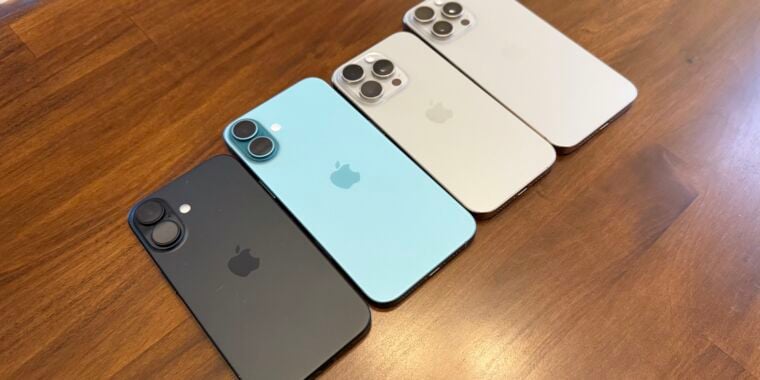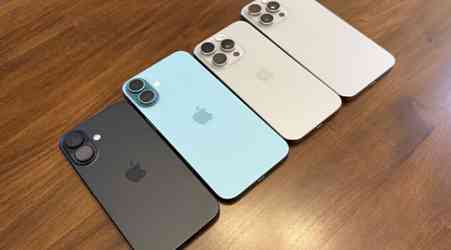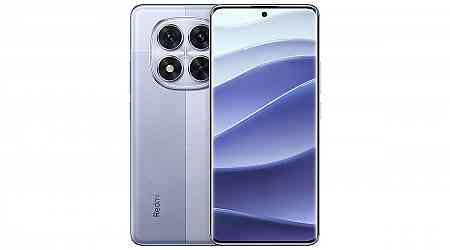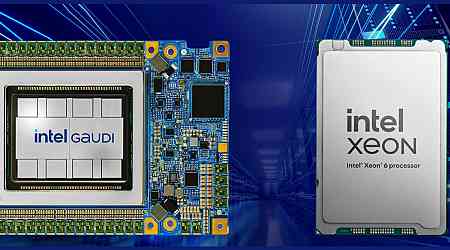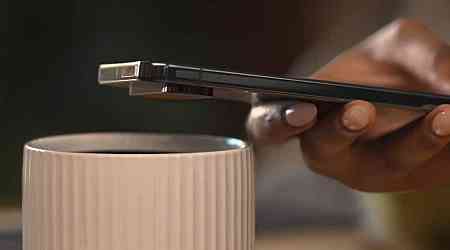With the iPhone 16 and iPhone 16 Pro, it has never been clearer that the cycle of radical invention has given way to iterative updates—not just on an annual basis, but a monthly one, due to delayed features coming in later software updates during the iOS 18 cycle.
The final form of the smartphone as we know it has been reached and nearly perfected. Nothing fundamental is changing anymore. But if you take the long view of just a few years, you can still see some impressive progress.Year after year, the iPhone 16 is Apple’s most lightly iterative flagship phone release ever. But if you’re upgrading from an iPhone 13 or earlier, you’ll still feel like you’re graduating to a whole new experience.
Table of Contents
A note on Apple Intelligence
| Specs at a glance: iPhone 16, 16 Plus, 16 Pro, 16 Pro Max | |
|---|---|
| Screen | 2556×1179 6.1-inch (16), 2796×1290 6.7-inch (16 Plus), 2622x1206 6.3-inch (16 Pro), 2868x1320 6.9-inch (16 Pro Max) OLED |
| OS | iOS 18 |
| CPU | Apple A18 Bionic (16 & 16 Plus), Apple A18 Pro (16 Pro & 16 Pro Max) |
| RAM | 8GB |
| GPU | Apple A18 Bionic (16 & 16 Plus), Apple A18 Pro (16 Pro & 16 Pro Max) |
| Storage | 128, 256, or 512GB for 16 & 16 Plus; 128, 256, 512GB, or 1TB for 16 Pro; 256, 512GB, or 1TB for 16 Pro Max |
| Networking | Wi-Fi 7, Bluetooth 5.3, 5G |
| Ports | USB-C |
| Camera | 48 MP main camera and 12 MP ultra-wide (16 & 16 Plus); 48 MP main camera, 48 MP ultra-wide, 12 MP 5x telephoto (16 Pro & Pro Max); 12 MP front camera; 4K HDR video |
| Size | 147.6×71.6×7.8 mm (16), 160.9×77.8×7.8 mm (16 Plus), 149.6×71.5×8.25 mm (16 Pro), 163×77.6×8.25 mm (16 Pro Max) |
| Weight | 170 g (16), 199 g (16 Plus), 199 g (16 Pro), 227 g (16 Pro Max) |
| Starting price | $799 (16), $899 (16 Plus), $999 (16 Pro), $1,199 (16 Pro Max) |
| Other perks | MagSafe, Face ID, Dynamic Island, Camera Control, always-on display (Pro models) |
Much of Apple’s marketing messaging going into this launch has focused on Apple Intelligence, a suite of generative AI features that will work only on the new iPhone 16 line and last year’s iPhone 15 Pro and 15 Pro Max. However, none of those features is available yet.
We’re not in the habit of reviewing phones for what they could do rather than what they currently do, so I won’t be talking about Apple Intelligence in this review. When it’s ready for a public release, you can expect to see us covering it closely—the same goes for other delayed features in these phones.
For now, it’s just about what you get out of the box when you buy an iPhone 16 today.
Specifications
Let’s review the specs of the iPhone 16 and iPhone 16 Pro as they differ from last year’s phones.
Display
Nothing at all has changed about the iPhone 16’s display. It still comes in two sizes: 6.1 inches at 2,446×1,179 pixels and 6.7 inches at 2,796×1,290. Both clock in at 460 ppi, both are OLED with inky blacks and the maximum brightness to properly handle Dolby Vision HDR. (Apple claims 1,000 nits typical max brightness, 1,600 nits peak, and 2,000 nits peak outdoors.)
The Pro phones are almost the same as last year. Apple has just barely increased the footprints of these two phones while further slimming the already slim bezels, so the screens are just a little bit bigger than before: 6.3 inches at 2,622×1,206 and 6.9 inches at 2,878×1,320.
The expansive screens are subtly nice, but you probably wouldn’t notice they were bigger without doing a side-by-side comparison.
No one was looking for changes in the screens; these are still without question the best displays in consumer electronics outside of the priciest of high-end OLED TVs—and even with those, it’s close. If it ain’t broke, definitely don’t fix it.
The display is where two of the key distinctions between the 16 and 16 Pro lie, though. The 16 Pro has a variable refresh rate screen that can go up to 120 Hz, whereas the iPhone 16 caps out at 60 Hz. This is hardly an essential feature—it’s the sort of thing you don’t even notice or know you want until you’ve upgraded—but the iPhone 16’s 60 Hz screen stands out as a bit behind competitors on the Android side, where 120 Hz is becoming standard even at middle price points.
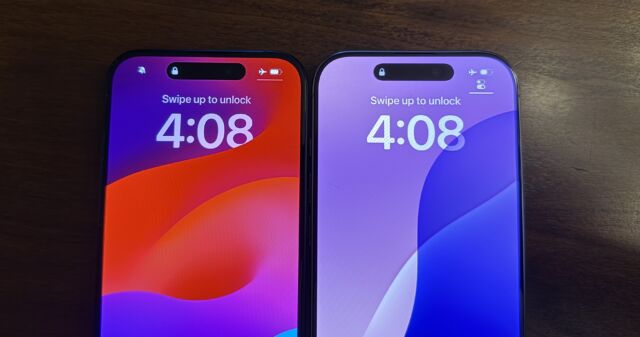
Additionally, the Pro phones are still the only ones to include always-on displays. Again, this is not a critical feature. Sometimes I even turn it off. But it is nonetheless another thing that is standard with the iPhone’s competitors.
Silicon
The iPhone 16 chip jumps two whole generations, from the A16 to the new A18, which has a 6-core CPU (4 efficiency, 2 performance) and a 5-core GPU. In addition to increased performance, the A18 promises up to around 30 percent less power usage for the same performance as the chip that was in the iPhone 15.
There’s also the 16-core Neural Engine, which is primed for the much-hyped Apple Intelligence, when it materializes next month. Notably, Apple determined that the chip in last year’s iPhone 15 was inadequate for Apple Intelligence, so this is the first non-Pro iPhone that promises to support those features.
That’s thanks also in part to a bump in RAM from 6GB to 8GB—now the regular iPhone and the Pro have the same amount.
Speaking of the Pro, it has a variant of the A18 called the A18 Pro. For a bit, Apple was shipping its Pro phones with the latest chips and letting the standard iPhone run a year behind, but the company has moved to the same approach that it uses in the Mac lineup: there are standard and high-end versions of the new generation of iPhone chips.
The CPU on the A18 Pro has the same number of performance and efficiency cores as the regular A18, but there’s one additional GPU core. Apple is touting the high-end 3D gaming features of this chip, promising double the speed for hardware-accelerated ray-tracing compared to the previous chip, for example. If only there were games to take advantage of that!
The A18 Pro also has an updated image signal processor and video encoder that supports several of the new camera features.
Other notable specs
Most of the other spec changes are in the cameras, which I’ll talk about in the cameras section of this review.
That said, it’s worth noting that all the new iPhones have Wi-Fi 7 support and a faster 5G modem. And thanks to larger batteries and the efficiency of the A18 and A18 Pro, the phones all promise just a little bit longer battery life than before.


















